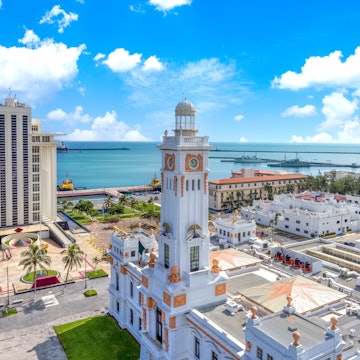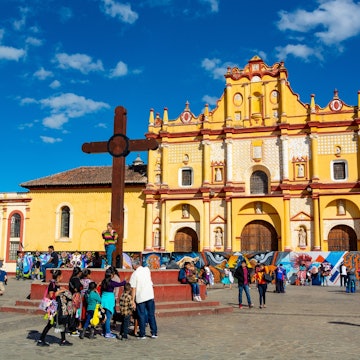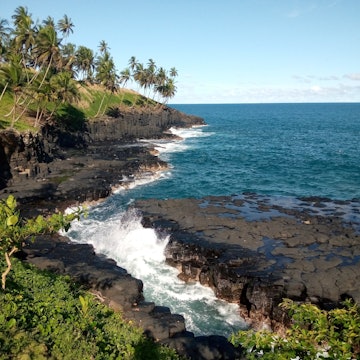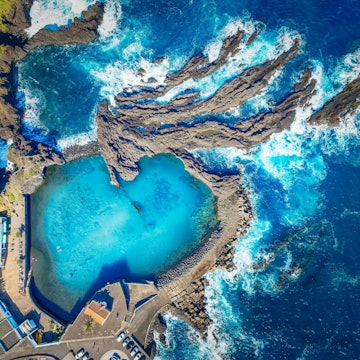

Galawa Beach in Grande Comore. UIG / Getty Images
Here’s a challenge for you: could you place the Comoros Islands on a map?
Named after the Arabic word for ‘moon’, Qamar, this poetically named but little-known archipelago is located between Madagascar and Mozambique.
It was an important trading post for Arab, Persian, African and European traders from the 15th century onwards. Annexed by the French over the course of the 19th century, three of the islands – Grande Comore, Mohéli and Anjouan – obtained independence in 1975; Mayotte, the fourth island, has remained a French territory.
Like their better-known Indian Ocean sisters Mauritius and the Seychelles, the Comoros have tropical charm: the temperature is a blissful 20 to 30°C year-round, palms swing in the breeze, and the water is turquoise. But the similarities stop there. Whereas Mauritius and the Seychelles have fine-tuned their high-end tourism offering over the past three decades, the Comoros have remained seemingly impervious to mass tourism. There are just 3,000 tourists a year, many of them curiosity-seekers on a quest to visit every country in the world, and that is precisely the appeal.
Grande Comore

Home to the capital Moroni, Grande Comore is the most diverse, and perhaps the most traveller-friendly of the Comorian islands. Moroni itself doesn’t feel like much of a capital – it is lively but unhurried. The medina (old town) is reminiscent of so many others in Africa and the Middle East, albeit slightly more dishevelled: beautiful carved doors, small winding lanes and minarets peaking through the skyline. The port fills up and empties with the tides and the air is fragrant with frangipani trees and bougainvilleas.
The southern half of Grande Comore is dominated by the large Karthala volcano, one of the most active in the world, whose lofty summit (2360m) seems to be perpetually lost in equatorial clouds. The mountain is a popular two-day trek (with overnight camping on the slopes) that winds through thick forest before reaching the lunar landscapes of the crater. The new tourism office (+269 333 82 13) can help you arrange guides.
The volcanic influence is obvious on the rest of the island too. As you take the mountain road up from Moroni towards the east coast, you reach a vantage point from where you can see two huge trails of volcanic rocks snaking down the slopes, souvenirs of past lava flows. These black rocks are what make the gorgeous beach of Chomoni so special, a brilliant contrast of blinding white sand, dark rocks and azure waters.
As you bump along north (the road is bad), the landscape unfolds with more gorgeous beaches, palm trees, great baobabs and moody skies. The most dramatic sight awaits right at the northern tip, before the road curves west. The Dos du Dragon (Dragon’s Back) is a series of rock formations standing tall on a curving peninsula – it looks uncannily like the imaginary spikes on a dragon’s back and is a wonder to behold. The best views are from across the bay, near Île Aux Tortues, but nothing beats actually scaling the Dos du Dragon itself, an easy walk from the roadside.
For a swim, the sheltered beaches around Trou du Prophète (Prophet’s Hole) can’t be beaten. Legend has it that the Prophet Mohammed hid from marauding pirates behind the tall rocks in the bay. You could certainly hide there all afternoon: the light is exquisite and the water translucent.
From there, it’s a 1½-hour drive back down to Moroni. Budget travellers should go for the Jardin de la Paix (doubles from €30-50) in the centre, with simple, clean rooms and probably the best restaurant in town (and one of the few establishments to serve alcohol). Those with a little more cash to spare can opt for the Retaj Moroni (doubles from €70), a lovely hotel set in gorgeous, expansive grounds, or the Itsandra Beach Hotel (doubles from €140), the most high-end establishment in the country.
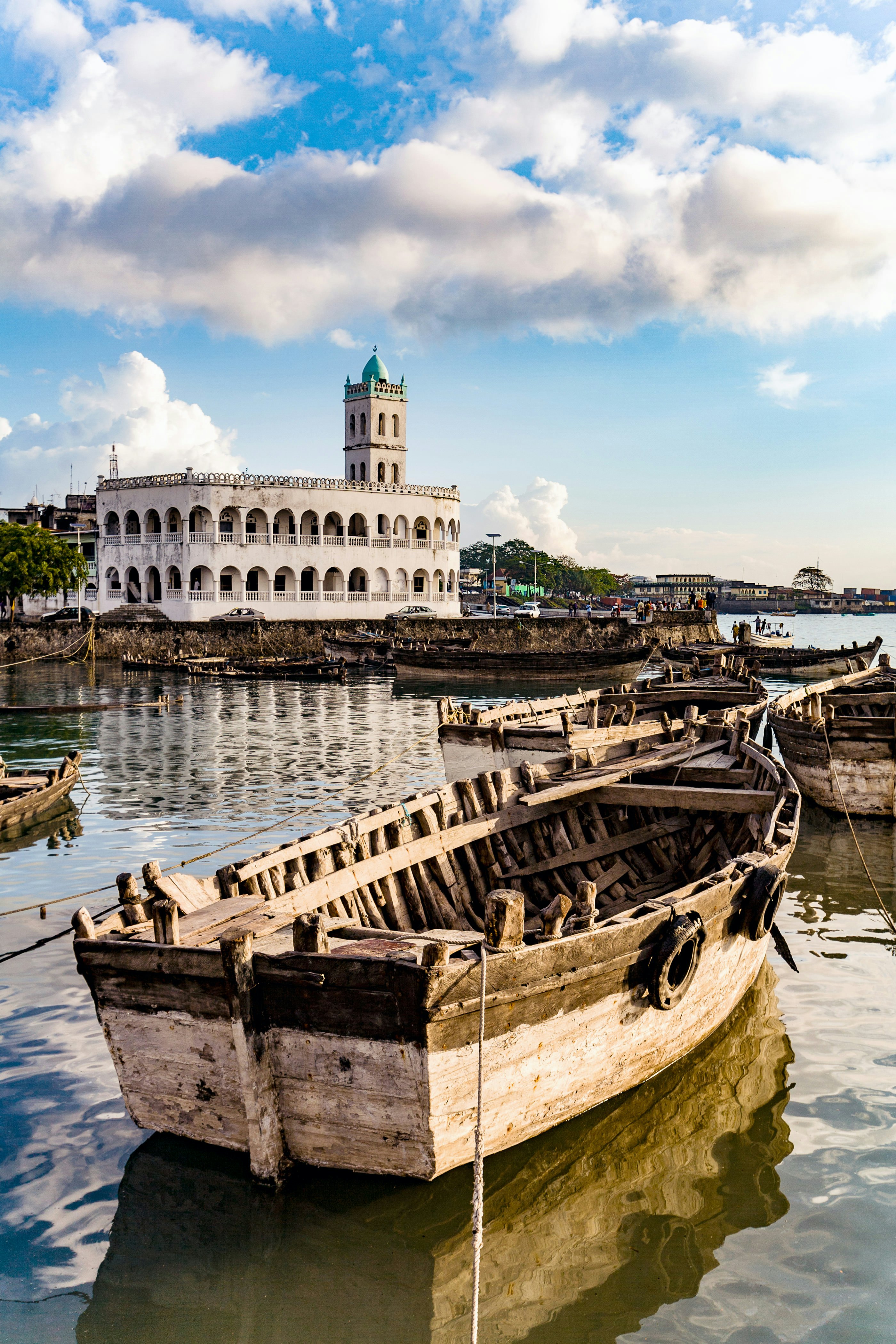
Mohéli
Where Grande Comore is about mineral beauty, Mohéli is all about the sea. This is the smallest and least populated of the Comorian islands, with forested slopes and a huge marine national park fringing the southern coast.
Being so unspoilt, Mohéli is a major turtle nesting site, meaning that travellers are virtually guaranteed to see turtles – whether nesting, hatching or whilst snorkelling. The village of Itsamia on the southeastern tip of the island has made turtles its raison d’être. Villagers used to eat turtles here; now they are involved in scientific monitoring and actively protect the turtles to encourage ecotourism.
Accommodation is in basic bungalows – not a big issue since you’ll spend much of the night on turtle watch. Sitting on the beach at night will also acquaint you with the Comoros’s spectacular night sky – as clear as in any desert.
After a night roughing it, you’ll want to put your bags down for a couple of days, and there can’t be more wonderful a place than Laka Lodge (€50 per person per night full board). Nestled in a small bay near the village of Nioumachoua, Laka Lodge is everything you could possibly want of an island holiday: pretty and comfortable bungalows, great hosts, lovely beach, snorkelling equipment and excursions aplenty in the numerous islets of the national park.
Anjouan
A distinctive triangular shape, Anjouan is the most populated of the Comorian islands. Along with Mohéli, it is the only place where you can see the endangered Livingstone fruit bats. These giants (their wingspan reaches 1.5m) live in small colonies high up in the mountains. Local NGO Dahari can organise treks (€50) to see the colonies and to other biodiversity hotspots on the island.
To unwind, Moya in the south of the island is the prettiest and most accessible beach. Moya Beach Hotel (+269 337 92 21, moyabeach@yahoo.fr; d €20) is the most atmospheric accommodation on Anjouan (and serves a mean lobster).
Island-hopping
Island-hopping is part and parcel of travelling in the Comoros, yet it is also the trickiest bit. Ferry services are limited, so your best option is to fly. This being the Comoros, punctuality is hit and miss, as is, sadly, safety; the two main airlines are ABAviation and Inter-Iles Air (+269 771 00 03).
If you’re travelling in a group, you should consider chartering a private boat. Blue Safari Comores (+269 323 1038, dlegeant77@hotmail.com) has a beautiful 12m sailing yacht that can accommodate 4-6 people comfortably on multi-day cruises (€300/day).
Getting there & away
Kenyan Airways, Air Tanzania and Air Madagascar fly to Prince Said Ibrahim airport on Grande Comore. 45-day visas are available on arrival for €30.
Emilie Filou is French by birth, English at heart, and in love with Africa. Follow her at @EmilieFilou.
Make the 'Big Red Island' your next stop after the Comoros with Lonely Planet's Madagascar travel guide.
Find the best places to stay with Lonely Planet's expert-recommended hotels and hostels in Madagascar.






